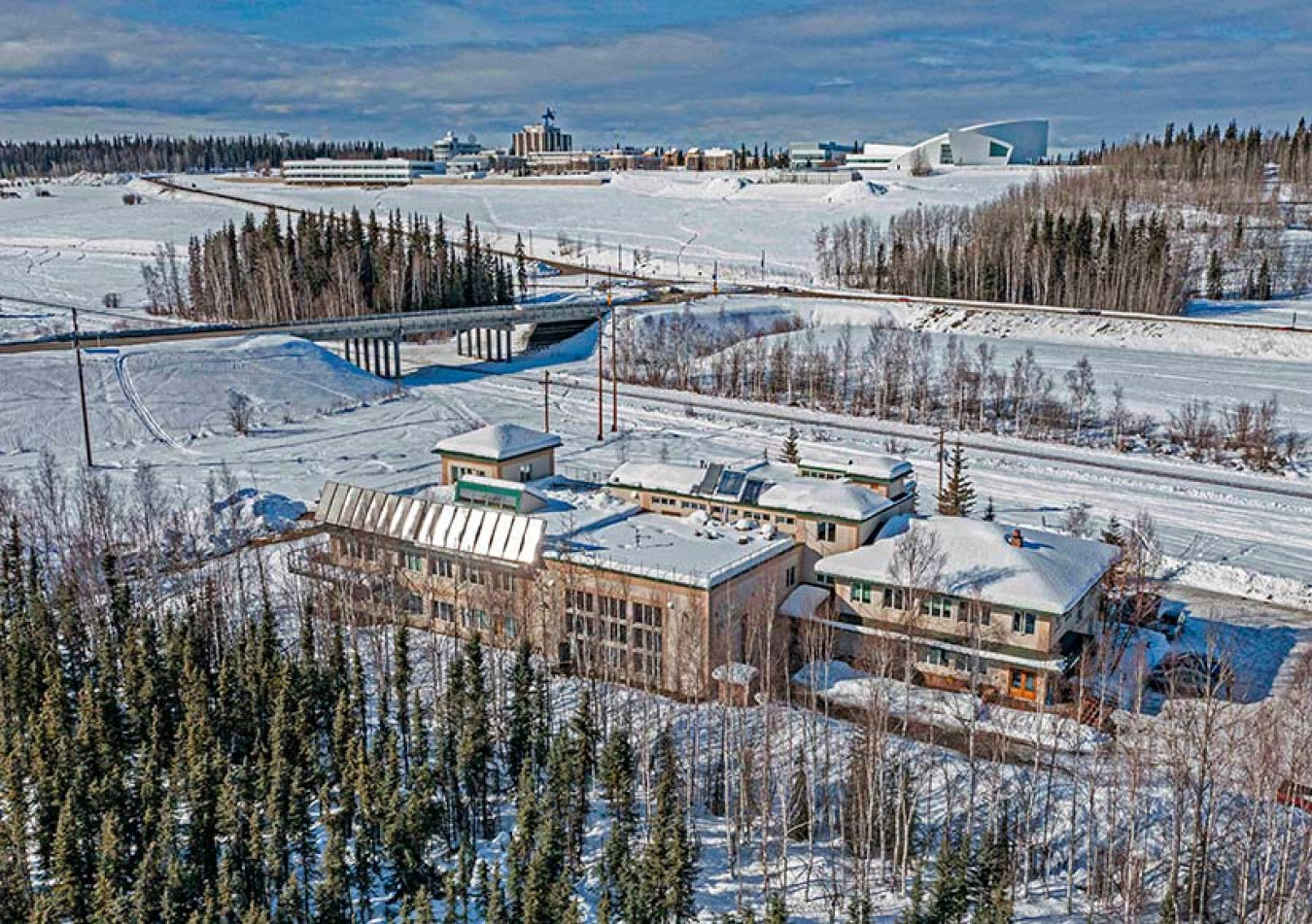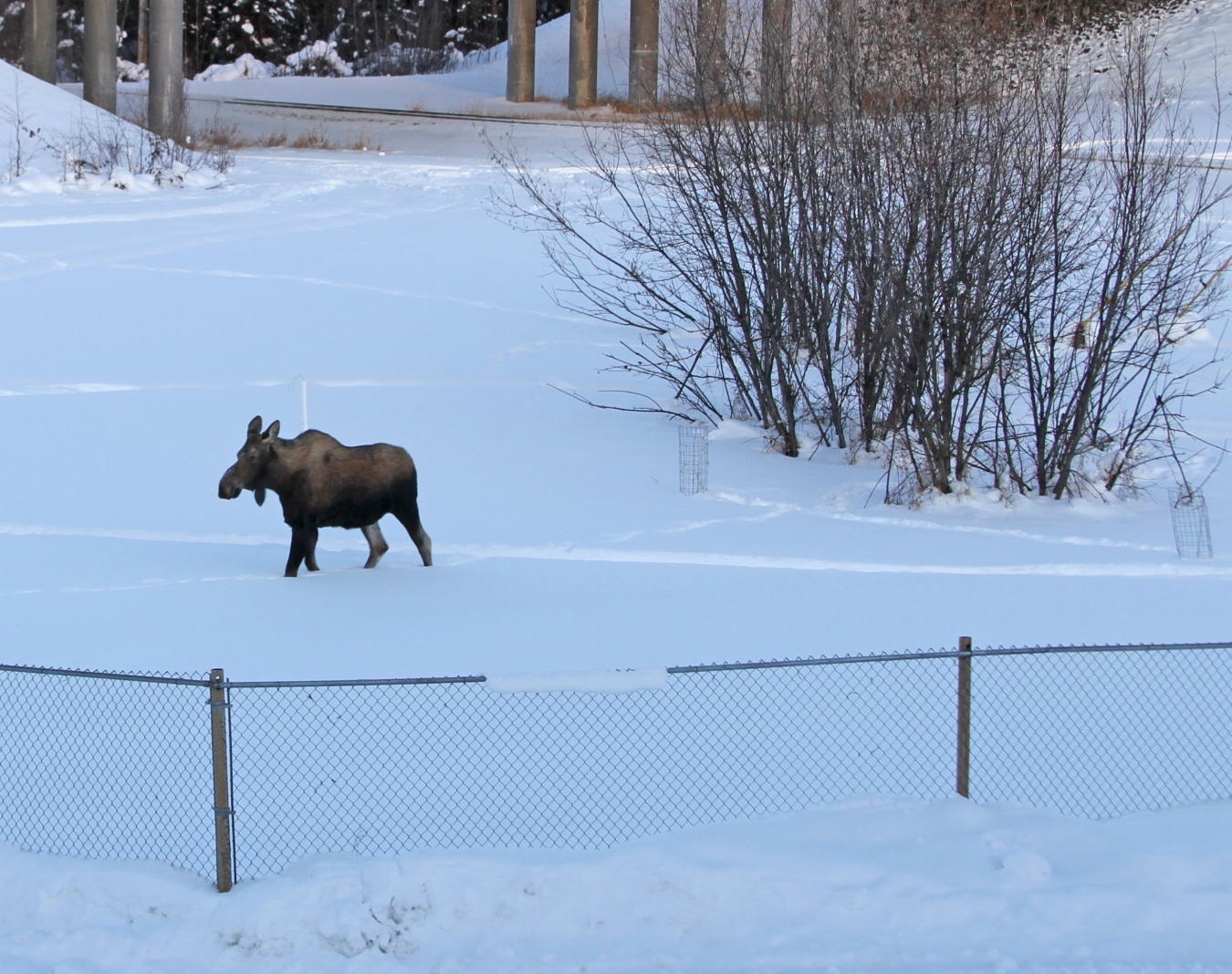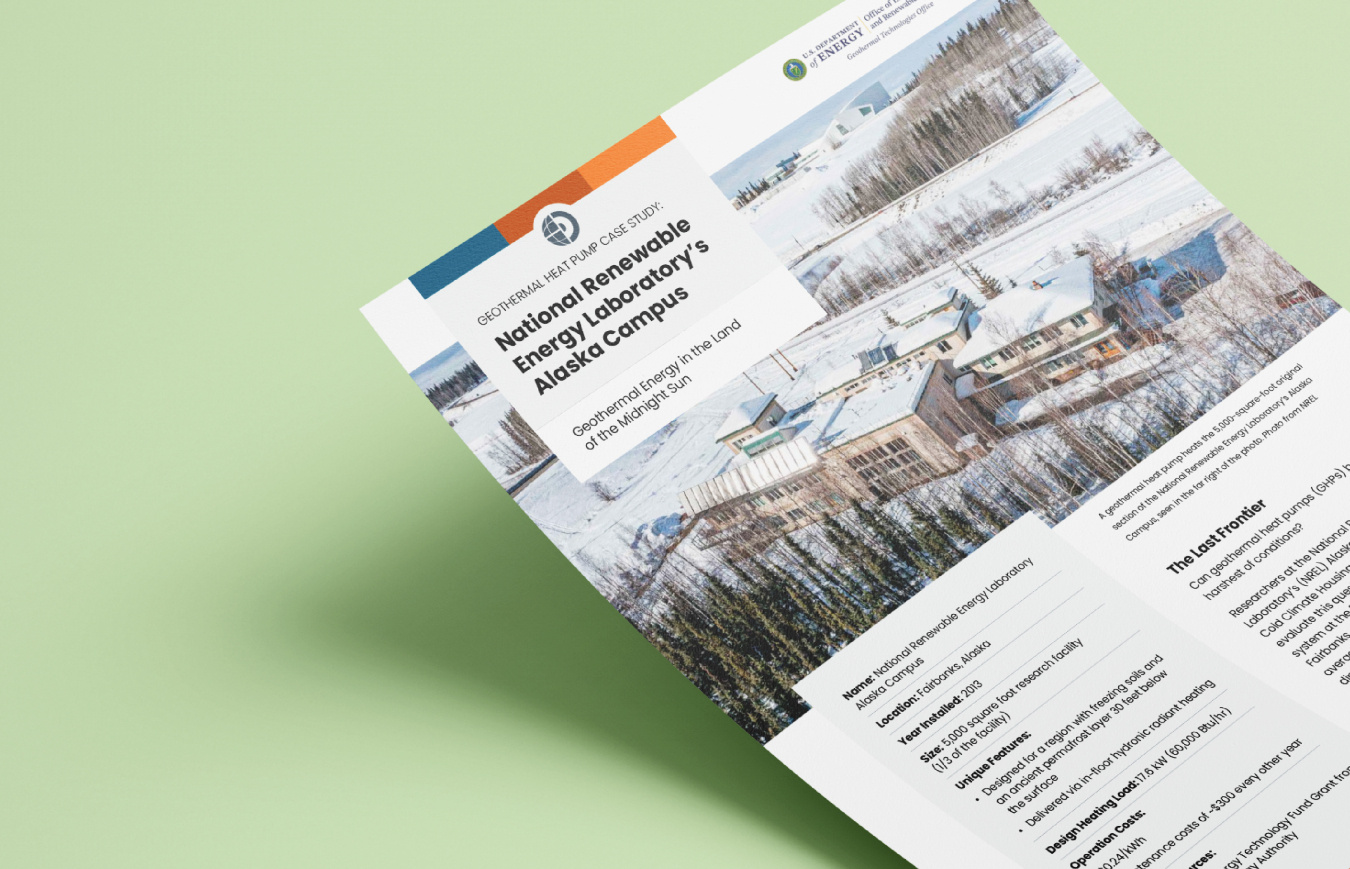
A geothermal heat pump heats the 5,000-square-foot original section of the National Renewable Energy Laboratory’s Alaska Campus, seen in the far right of the photo. Photo from NREL
Fast Facts
Location: Fairbanks, Alaska
Size: 5,000 square foot research facility (1/3 of the facility)
Unique Features:
- Designed for a region with freezing soils and an ancient permafrost layer 30 feet below the surface
- Delivered via in-floor hydronic radiant heating
Download the full case study for additional fast facts.
The Last Frontier
Can geothermal heat pumps (GHPs) be used in the harshest of conditions?
Researchers at the National Renewable Energy Laboratory’s (NREL) Alaska Campus (formerly the Cold Climate Housing Research Center) wanted to evaluate this question by installing a geothermal system at the Research and Testing Facility in Fairbanks, Alaska, in 2013. With temperatures averaging 0°F most of the winter, and regularly dipping to -20°F and -40°F, the location is the epitome of “harsh” conditions.
The goal of the research project—which replaced the 77,000 Btu/hr oil-fired condensing boiler that had been heating the 5,000 square foot office space—was to monitor the system for 10 years to better understand the performance of geothermal heat pumps in sites with permafrost and high heat needs, helping to inform future designs.
Why Geothermal?
Staff at the research institution started looking for new heating solutions in 2010 because the cost of diesel heating fuel had skyrocketed. To get away from the cost and volatility of oil, researchers wanted to take advantage of more stable electricity costs ($0.24/kWh for their specific site and system). They also knew the subsurface temperature is always warmer than air temperature in the winter.

A moose visits NREL’s Alaska Campus and walks on top of the hidden, buried ground loop for the geothermal system. Photo by Molly Rettig, NREL
Design Heating Load: 17.6 kW (60,000 Btu/hr)
Operation Costs:
- $0.24/kWh
- Maintenance costs of ~$300 every other year
Funding Sources:
- Emerging Energy Technology Fund Grant from the Alaska Energy Authority
The area also had an active installer for residential geothermal systems who was experienced with Alaska’s unique characteristics.
“If you are thinking of installing a geothermal heat pump in an area like Fairbanks, make sure you find an installer and designer who have experience in a cold climate,” said Robbin Garber-Slaght, NREL geothermal researcher. “The design of a heat pump in very cold soils is difficult and can easily not go well if they don’t account for the freezing aspect.”
System Design
The campus installed a horizontal ground loop system, drilling down 9 feet deeper than what most other locations need, but necessary in this subarctic site to get below the line of seasonal frost. The system was activated in October 2013.
The heat pump heats an 80-gallon buffer tank of water to between 80°F and 109°F, depending on the outdoor air temperature. Heat is then delivered via in-floor, hydronic radiant heating.
Operations
The site runs a 20% methanol, 80% water solution in the ground loop so the system doesn’t freeze. On average, the geothermal system needs a maintenance visit once every other year, with maintenance costs around $300 per visit.
When diesel oil prices are high, the geothermal system is more cost-effective; when diesel prices drop, the cost effectiveness of the geothermal system is diminished. Regardless, the geothermal system has delivered 20,000-30,000 kWh of heat annually, eliminating 700 gallons of fuel oil per year.
The system doesn’t run in the summer because there is minimal need for cooling.
Future Plans
As of 2024, one-third of the Alaska Campus runs on the geothermal system. Another third runs on a biomass boiler, and the final third is on a diesel boiler.
Researchers plan to replace the existing heat pump with a newer system, which will use the original ground heat exchanger, continuing the study of long-term heat pump performance in extreme cold soils.
“When we installed the system in 2013, there were tax credits for geothermal heat pumps, and there are tax credits now that residential and commercial sites should look into.”
Robbin Garber-Slaght, NREL geothermal researcher
Contacts:
For questions about this case study, contact Molly Rettig, Molly.Rettig@NREL.gov.
For any website technical issues or general questions about geothermal heat pumps, contact DOE.Geothermal@ee.doe.gov.
Printable Version
Download the printable NREL Alaska Campus case study or visit the Geothermal Heat Pump Case Studies page to see more examples of geothermal heat pumps in action.


